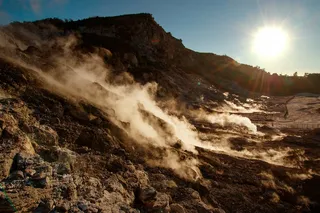In the summer of 1984, Michael Salamon and Steve Ahlen went looking for antimatter in the cosmos the old-fashioned, low-budget way. Salamon, who was then at the University of California at Berkeley, and Ahlen, who was at Indiana University, bootlegged some spare cash from a previous experiment and used it to wire up an antimatter detector--a superconducting magnet and some elaborate electronics. They rigged the contraption to sit on a shelflike structure hanging from a high-altitude balloon. The balloon was capable of rising up to 130,000 feet, where it would be above the bulk of the atmosphere and could capture unimpeded the cosmic rays that rain continuously from the heavens. After a few years building the detector and then a month of 18-hour days readying the equipment for its mission, Salamon and Ahlen launched the balloon from Prince Albert, Saskatchewan, on August 13, 1987. It rose to its heavenly altitude ...
The Antimatter Mission
A few curious physicists think it's time to find some antimatter stars in antimatter galaxies.
More on Discover
Stay Curious
SubscribeTo The Magazine
Save up to 40% off the cover price when you subscribe to Discover magazine.
Subscribe













